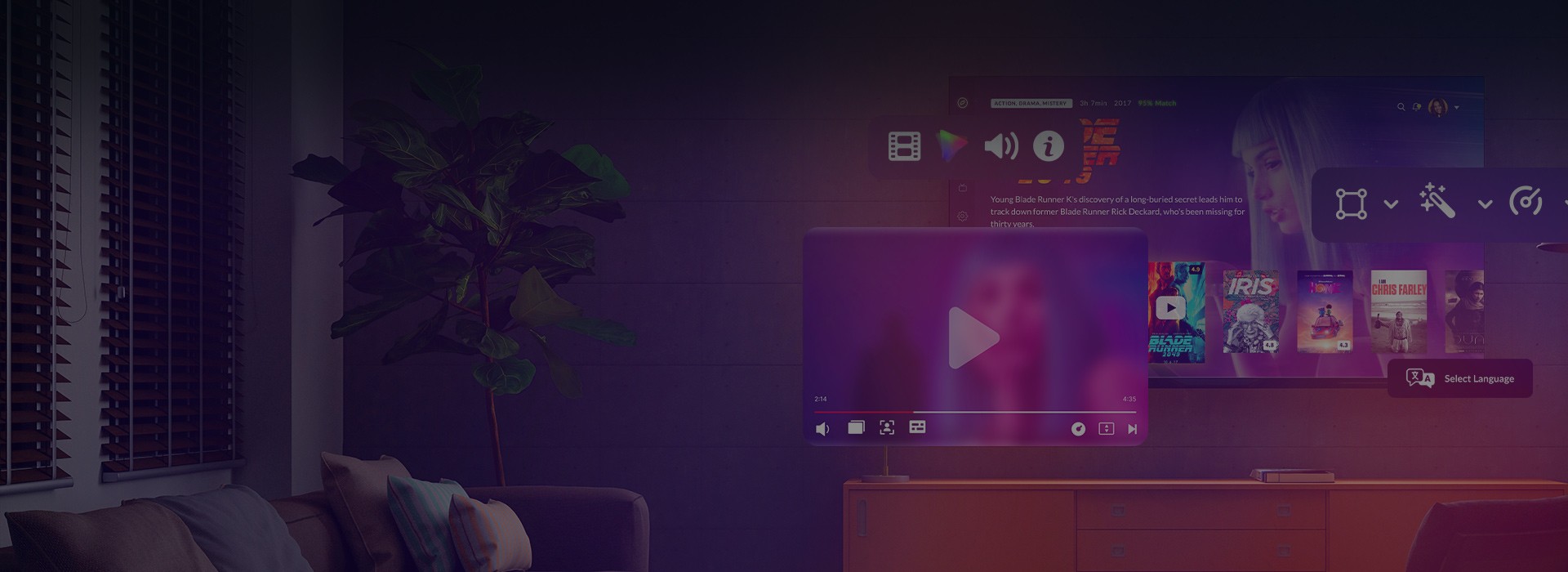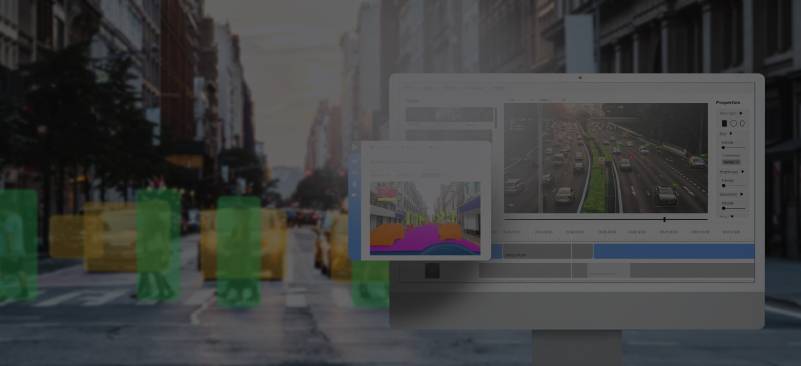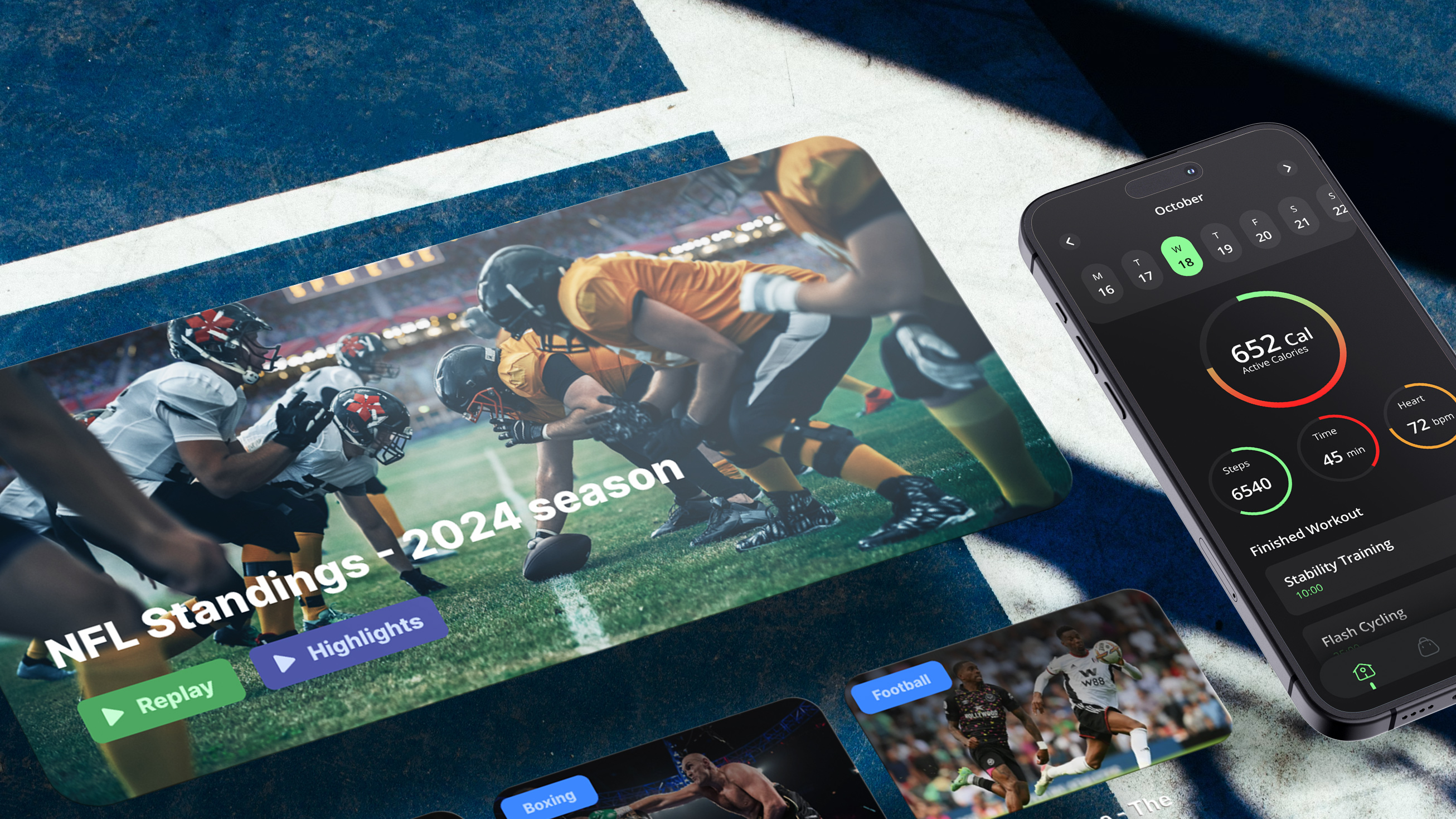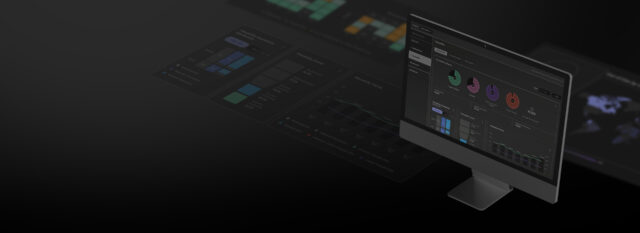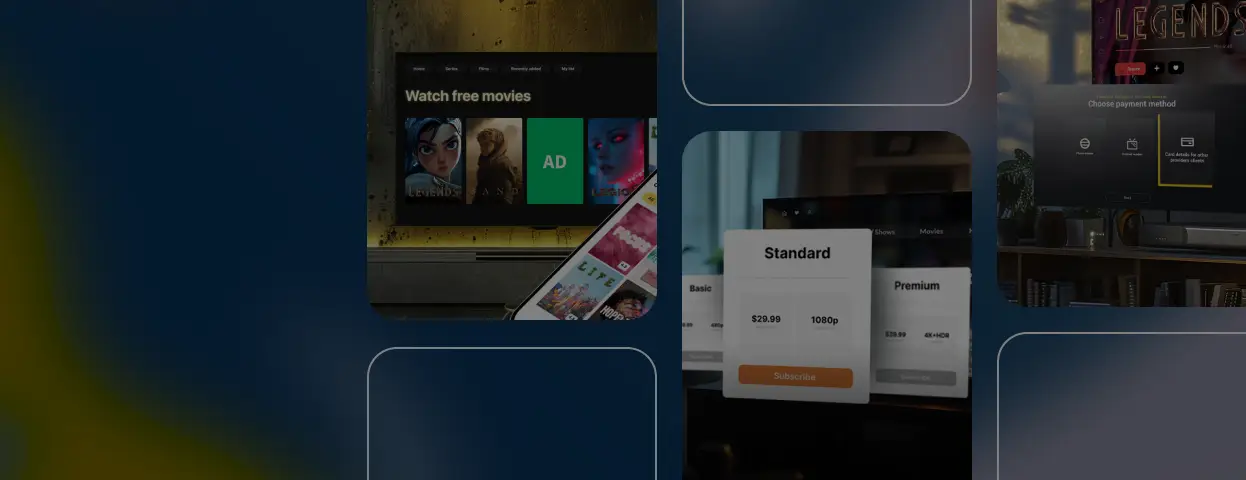With video content consumption continuing its rapid rise, the global OTT market is projected to reach $207,52 billion in 20251. From streaming giants to niche content providers, competition is fierce, and expectations are higher than ever.
In this environment, success isn’t just about offering great content. It’s about delivering it flawlessly — on any screen, in any network condition, and with zero tolerance for delays or playback errors. That’s where OTT testing becomes mission-critical.
So, what is OTT platform testing today? It’s not just a quality check but an ongoing strategy that ensures your platform can scale, perform, and comply with both user and regulatory demands. From media stream testing to app performance and security validation, let’s explore how comprehensive OTT application testing helps future-proof your streaming experience.
What is OTT testing?
OTT testing is a continuous quality assurance process that ensures video platforms deliver a smooth, reliable, and secure viewing experience across devices, locations, and network conditions. With users expecting flawless playback and instant access to content, testing has evolved far beyond simple functionality checks.
Today’s OTT application testing combines multiple layers of validation:
- Functional testing — to verify content ingestion, playback workflows, monetization logic, and user interactions;
- Cross-platform testing — to ensure consistent behavior across mobile apps, smart TVs, web players, and streaming devices;
- Media stream testing — to detect bitrate drops, buffering events, and playback interruptions;
- Performance and network testing — simulating various conditions like low bandwidth or peak traffic loads;
- Security testing — identifying vulnerabilities in authentication, payment flows, or DRM systems;
- Localization and accessibility checks — making sure the platform complies with legal, cultural, and usability requirements.
As OTT platforms scale, automated testing plays a central role. It allows teams to validate new builds, detect regressions early, and simulate real-world usage scenarios across hundreds of device and OS combinations. This end-to-end approach to OTT platform testing ensures every viewer gets the quality they expect, wherever and however they’re watching.
Why Consistent Testing Is Critical for OTT Platforms
As OTT services expand their global reach, the pressure to deliver consistent quality across devices, platforms, and network environments has never been higher. Viewers expect immediate playback, high resolution, and uninterrupted streaming, whether they’re watching on a smartphone during a commute or on a 4K TV at home.
This growing complexity introduces several layers of risk that only comprehensive testing can mitigate:
Gadgets galore
The ubiquity of OTT content consumption spans an array of devices — from smartphones and Smart TVs to laptops, desktops, and dedicated streaming devices like Apple TV, Roku, and Amazon Fire TV Stick. Ensuring a stable user experience across all of them requires careful testing tailored to each form factor.
Platforms and operating systems
Diving deeper, the variations extend to operating systems and browsers, with Android, iOS, Windows, macOS, WebOS, Tizen OS, and Google TV shaping the OTT landscape. Each OS version and browser introduces compatibility variables that must be tested, especially when dealing with long-tail devices or legacy systems.
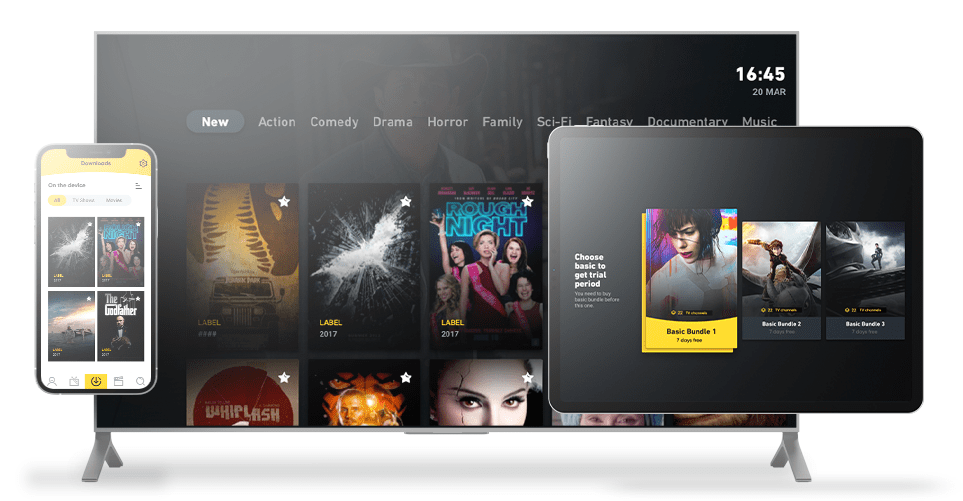
Navigating network nuances
Viewers stream content over mobile networks, Wi-Fi, and wired connections — all with different bandwidth and stability profiles. Network throttling, switching, and congestion simulations help reveal potential issues before users do.
Complying with local OTT specifics
Regional content rules, age restrictions, and cultural standards mean you can’t roll out features universally without risk. Pre-release testing ensures that region-specific versions of your app meet local expectations and legal requirements.
Ensuring legal compliance
From data privacy laws to content licensing, OTT services must stay aligned with changing regulations in every market they enter. Testing helps confirm that geo-blocking, parental controls, and consent flows are working as expected.
Each factor increases the need for automated, multi-layered testing. It’s not just about finding bugs but delivering an experience that’s consistent, compliant, and competitive.
Types and technologies for enabling OTT testing
Below are the two key types of tests that make up an OTT testing approach.
Unit tests
Unit tests are the initial line of the OTT testing approach. It focuses on individual components, examining isolated operations and ensuring each piece of the OTT platform’s features function correctly.
Integration and end-to-end tests
Integration tests come into play to evaluate the collaboration of several modules. For instance, in a viewer interaction scenario, a series of actions, such as clicking login and registration buttons or validating input fields, are simulated in OTT automation testing. End-to-end tests go further, imitating full user behavior across the entire interface to verify real-world flows and system responses.
Both unit and integration tests play a vital role in a broader OTT application testing strategy, providing early insights into functionality issues and integration mismatches. But there’s another ingredient that matters. Automated testing is pivotal in elevating product quality through many advantages:
- The ability to run tests an unlimited number of times ensures comprehensive coverage and a thorough examination of various scenarios.
- Continuous and scheduled automated OTT platform testing of the latest builds guarantees that any issues are identified promptly.
- By investigating numerous test cases in different combinations across multiple platforms and versions, automated testing uncovers potential vulnerabilities that might be overlooked in pre-release testing.
Overall, these attributes collectively contribute to the early detection and resolution of bugs, mitigating risks and enhancing the overall quality of the OTT platform before it reaches the end viewer.
Meet an expert
Eugene Yakovets, Automation QA Engineer
“As QA engineers, our mission is to strike the perfect balance between manual and automated testing. By striving to automate 80% of our OTT application testing, we not only expedite the delivery of releases but also enhance product quality. This dual impact directly translates into increased profits, as faster releases enable us to swiftly introduce more revenue-generating features. The recent success of automating the adult content flow not only ensured its continued operability but liberated us from exhaustive manual checks, allowing us to focus on delivering excellence in every aspect of our testing efforts.”
Optimal areas for testing an OTT solution
Viewing experience
You can’t be sure your OTT platform can deliver top-notch viewing experiences without function-testing it, which validates the solution against the tech requirements. This way, you’ll ensure glitch-free operation of every OTT component, including functionality like EPG, time shift, recommendations, and sharing.
Functional testing is also key to verifying complex business rules and OTT workflows such as content ingestion, encoding, transcoding, editing, management, playout, monetization, and more. And comprehensive testing of multi-screen apps — including STB and Smart TV testing &Mdash; will help you make sure your solution perfectly operates on every platform and resolution.
Optimizing the big-screen TV focus now requires more precise validation of interface logic, remote control behavior, and performance on various Smart TV OS versions, including recent updates to Tizen and WebOS.
Optimizing the big-screen TV focus stands out as a complex task within the variety of OTT platform functionalities, demanding precise scrutiny of the user experience. Employing a meticulous methodology, QA engineers guarantee its concentration on essential UI elements, while adhering faithfully to the designated UX flow. Shifting gears to mobile OTT applications, a high emphasis is placed on scrutinizing the prowess to seamlessly download content, requiring a nuanced approach to quality assurance.
Rigorous functional testing can not only help you check that everything works as expected and addresses glitches that might hamper user experiences, but also reveals unanticipated issues.
OTT app performance
It’s not new that a website’s load speed matters. According to Neil Patel, 40% of users abandon a website that takes more than 3 seconds to load. And with video content, the stakes are much higher. Every second counts, and your clients will opt for competitor service if your content doesn’t start streaming within 2 seconds.
Buffering is one more aspect that can make or break your solution. To deliver top-notch viewing experiences and grow the client base, buffering should be reduced to zero. For that to happen, conduct comprehensive OTT performance testing. Load and stress testing will help you determine the stability of your platform under peak traffic and reveal the causes for bad performance, including network, firewall, or router issues. Today, performance testing often includes CDN switching simulations and last-mile delivery analysis to identify regional bottlenecks and optimize edge streaming.

Online video performance
Also, to reveal weak elements of your solution’s architecture, pay particular attention to testing multi-CDN setups and streaming protocols. Other key metrics to track are bandwidth, buffer fill, lag length, play length, and lag ratio.
When delving into the intricacies of testing for Smart TVs, a multifaceted approach is imperative:
- Streamlining memory consumption to ensure consistent functioning on both recent and legacy devices.
- Acknowledging the nuances inherent in diverse Smart TV operating systems, encompassing Tizen and WebOS.
- Tailoring the testing methodology to accommodate the distinctive features of various generations of Smart TV operating systems.
- Validating app behavior across different chipsets and hardware limitations, including low-end TVs and hybrid OS builds shipped by regional manufacturers.
- Ensuring remote control navigation remains responsive across multiple firmware versions and input models.
How we can help you
Underpinned by multi-year OTT testing expertise, Oxagile solves the most complicated OTT quality assurance challenges. From Smart TV apps to web and mobile platforms, we’ve got you covered.
Quality of experience
Quality of experience (QoE) testing is another method to ensure smooth viewing for audiences of any size. This way, you assess your OTT solution’s quality from the end-user perspective — through parameters like service accessibility, retainability, and integrity.
Namely, this type of service quality verification through video streaming tests includes examining an array of performance metrics:
- Network congestion, jitter, edge caching
- Start time and startup speed
- Average bitrate
- Bandwidth usage
- Rebuffer time and the likelihood of buffer
- Resolution of the video stream
- Playback stability across adaptive bitrate ladders
- Consistency of experience during network switching or throttling
Another aspect that needs prioritization is playback. You can track OTT quality of experience with extended playback testing — by tracking the rate at which playback failures occur during video streaming and by analyzing hundreds of video playback condition combinations.
To enhance accuracy, many providers now combine synthetic monitoring with real user monitoring (RUM) to detect QoE issues in production environments, especially on edge devices and under variable load.
Besides checking performance aspects, pay heed to testing UX, UI, and layout management. This will help you ensure great QoE across devices and platforms.
In-app security
Personal customer data and premium video content — these are two major reasons why you need to prioritize security testing when building your OTT app.
Any component of your solution, whether it’s custom code, third-party libraries, or integrations, might be prone to an attack. Penetration testing will help you detect any kind of vulnerability — like broken authentication, cross-site scripting, SQL injection, memory leaks, etc. — and proactively address them. New forms of attacks — including DRM bypass attempts, session hijacking, and AI-generated phishing overlays — require deeper inspection and more advanced test coverage across devices and playback environments.
With advanced vulnerability scanning tools, you can automatically identify potential threats on your network devices, such as firewalls, routers, switches, and servers.
Among other testing types that are key to ensuring video and user data security are content targeting testing, media encryption testing, payment gateway testing, authentication and authorization testing, as well as data privacy compliance testing.
Security testing is now an essential part of CI/CD pipelines, integrated via DevSecOps practices to ensure issues are caught early without slowing down delivery.

Product localization
If you want to get a competitive edge on the OTT market and expand your business to new territories, adapt your platform to the requirements of specific regions with localization testing. This usually means not only going beyond language barriers, but also validating an array of other key aspects:
- Date, time, currency formats
- In-app terminology and error messages
- Video subtitles
- Dropdown and data entry fields
- Bulleted and numbered lists
- Visual layout and reading direction in RTL (right-to-left) languages
- Cultural sensitivity checks — such as imagery, tone, and prohibited symbols depending on market
Besides, all-around l10n and i18n testing will help you make sure the functionality that is not applicable to a particular locale will be automatically hidden.
To thoroughly test the requirements for product localization, a simulated environment can be designed where the system time is adjusted to X hours to replicate different time zones. By logging in as a user from a specific region, we can verify that the current broadcast aligns correctly with the local schedule, ensuring the accurate display of programs and timely information in the application, such as subscription renewals or start times for events. Furthermore, for OTT services that only operate in a specific region, a VPN can be employed to emulate inaccessible regions for the application. In some cases, geolocation testing is combined with automation frameworks to dynamically verify regional behavior across content catalogs, pricing, and access restrictions.
This meticulous testing process ensures that users consistently encounter accurate localization settings, while the viability of these checks can be reaffirmed through daily automated test runs.
Case in point: real project challenges addressed by Oxagile’s QA engineers
Managing the intricacies of the regional content streaming limitations and handling potential traffic overloads were just a couple of test cases delivered by Oxagile’s automation QA engineers. Find out about the QA automation approach applied.

Revamping OTT platform quality with comprehensive QA
You won’t be able to deliver outstanding viewing experiences if your OTT solution’s quality is not verified with robust video streaming testing. Operation, QoE, performance, security, flexibility — satisfy the highest quality requirements around these key aspects and beyond with experienced QA engineers.
Sources:
1. Statista — OTT Video Advertising — Worldwide

